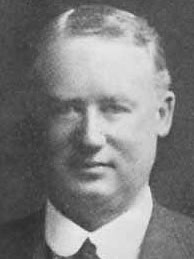 |
| Sir Percy Fitzpatrick |
The Amanzi estate in the Coega River valley comprises most of the area once occupied by the loan farm Rietheuvel. Sir john Barrow visited the region in 1797 and described the warm mineral springs there. In 1854 there is a reference to the sale of 300 erven "on the farm Mineral Baths now to be called Balmoral" by James Bevan, the owner. In 1860 we find a Mr J.G. Steytler de Villiers, insolvent, selling "Balmoral, part of Mineral Baths farm". In August 1863 John Pigott Nixon bought two subdivisions of the old Mineral Baths farm and this portion was sold under the name of Alwyn Balmoral.
Major-General Nixon was a colourful and eccentric figure. Born on the Isle of Wight, he ran away to sea at the age of 15 and jumped ship in Algoa Bay, where he befriended a Mr Human of the farm Papiesfontein, near Gamtoos River mouth. His parents directed enquiries to the Cape Governor for their son, who was traced and returned to England. He never forgot his kind friends and kept in touch with them.
Nixon was commissioned in the British Army in 1841 and landed in Bombay in the same year. He saw active service in various campaigns in the East. He must have been on leave at the Cape when he bought Balmoral in 1863. Many British officers serving in the East spent their furloughs at the Cape. He was back again in 1868 as J.C. Chase records that he visited Cradock Place on several occasions. In 1869 he married Georgina Bean of Nanaga at St. Mary's Church, Port Elizabeth.
Nixon returned to the Cape in 1872 and the following year he purchased more land, thereby enlarging his Balmoral estate. In 1877 he was British Agent in Baghdad and two years later he retired with the rank of Major-General and settled at Balmoral. In 1890 he ran into financial difficulties and his farms were put up for sale. It is probable that he left for India in 1892. Nixon died in Bombay in 1906 at the age of 84.
Balmoral became the property of Hugh de Renzy Magennis. In 1908 Fred Harvey purchased part of Balmoral and in 1909 another portion was acquired by a Mr Haywood. It was noted that there were two fast flowing boreholes on the farm. In 1913 Sir Percy Fitzpatrick bought Glen Hay, part of Balmoral, from I.J. Ferreira and 743 morgen of the same farm from Mr F Haywood. Sir Percy used the estate, which was then named Amanzi, as an experimental citrus farm in connection with his grand scheme to develop the Sundays River Valley.
James Peter Fitzpatrick was born in King William's Town. He was the son of an Irish-born judge of the Cape Supreme Court. Percy, as he preferred to be named, began his career as a clerk in the Standard Bank in Cape Town in 1880. Four years later he left for the Eastern Transvaal where alluvial gold had been discovered and worked there as a storekeeper and a transport rider between Delagoa Bay and the interior. In later years we find him as a journalist, author, politician and company magnate until he began to turn his attention to farming, concentrating on citrus. It was at this time that he purchased Amanzi, 15km east of Uitenhage. As the name implies the farm had an ample supply of good quality artesian water derived from boreholes to irrigate the citrus orchards.
Sir Percy pioneered the citrus industry in the Eastern Cape and fathered what became known as the Citrus Board and the Deciduous Fruit Board which to this day market their exports through the Perishable Products Export Control Board.
The decision to build a storage dam to conserve the flood waters of the Sundays River and irrigate the valley was announced by Parliament in June 1917. There is no doubt that this move was due to the incessant efforts of Sir Percy FitsPatrick, Chairman of the Cape Sundays River Settlement Company, which had been formed in 1914. Sir Percy had tremendous faith in the ultimate success of this project and envisaged that it would eventually support some 10 000 people, mainly in the citrus industry.
For most of us Sir Percy is probably best remembered for his creation of "Jock of the Bushveld", published in 1907 and still being reprinted.
Sir Percy FitzPatrick died at Amanzi on January 24, 1931 and was buried at the Lookout, the resting place of the FitzPatrick family, alongside his wife, Lillian, who passed away in 1923 and his two sons, Alan and Oliver who both died four years before him. His third son, Nugent, lost his life in France in 1917.
After Sir Percy's death in 1931, the farm Amanzi passed through his only daughter, Cecily, into the Mackie Niven family.
Sources:
BARROW, Sir John. Travels into the interior of South Africa. 2 vols, 1806.
COATES, Mrs P.N.A. The Story of Uitenhage, 1904 - 1914.
WALLIS, J.P.R. Fitz. The story of Sir Percy FitzPatrick.
ROSKELL, A.H, Six years of a tramp's life in South Africa.
LOOKING BACK: Quarterly bulletin of the Historical Society of Port Elizabeth: Vol 4, Part 4, December 1964. Vol. 5, Part 1 March 1965. Vol 8, Part 4 December 1968. Vol. 17, Part 4 December 1977. Vol. 18, part 3 September 1978.
AMANZI FILE: Africana Collection, Port Elizabeth Public Library.
CARTWRIGHT A.P The First South African, 1971


I am the great grandson of Major General Nixon. I have heard my father talking about the farm Balmoral and the house that the General built. Are there any photos available of the house?
ReplyDeleteThank you, Vincent John Piggott Nixon.
Thete should be old photo of Balmoral..its wrecked now
ReplyDeleteThere are old photos..also of ruins
ReplyDelete